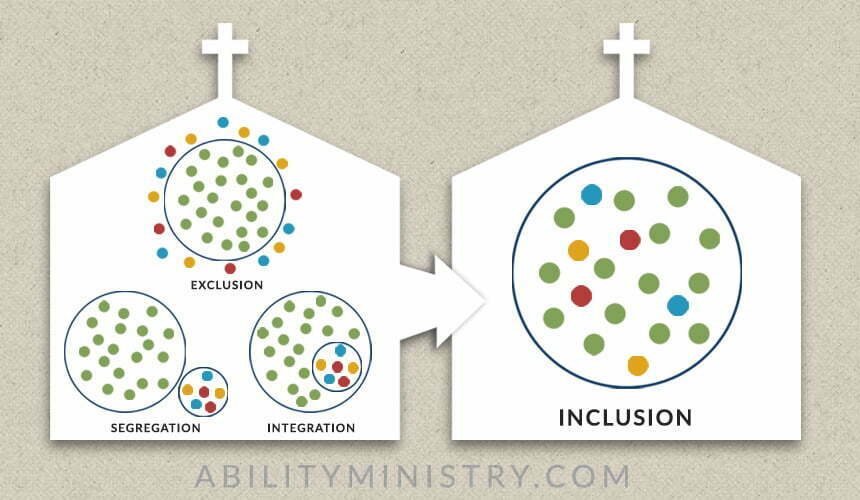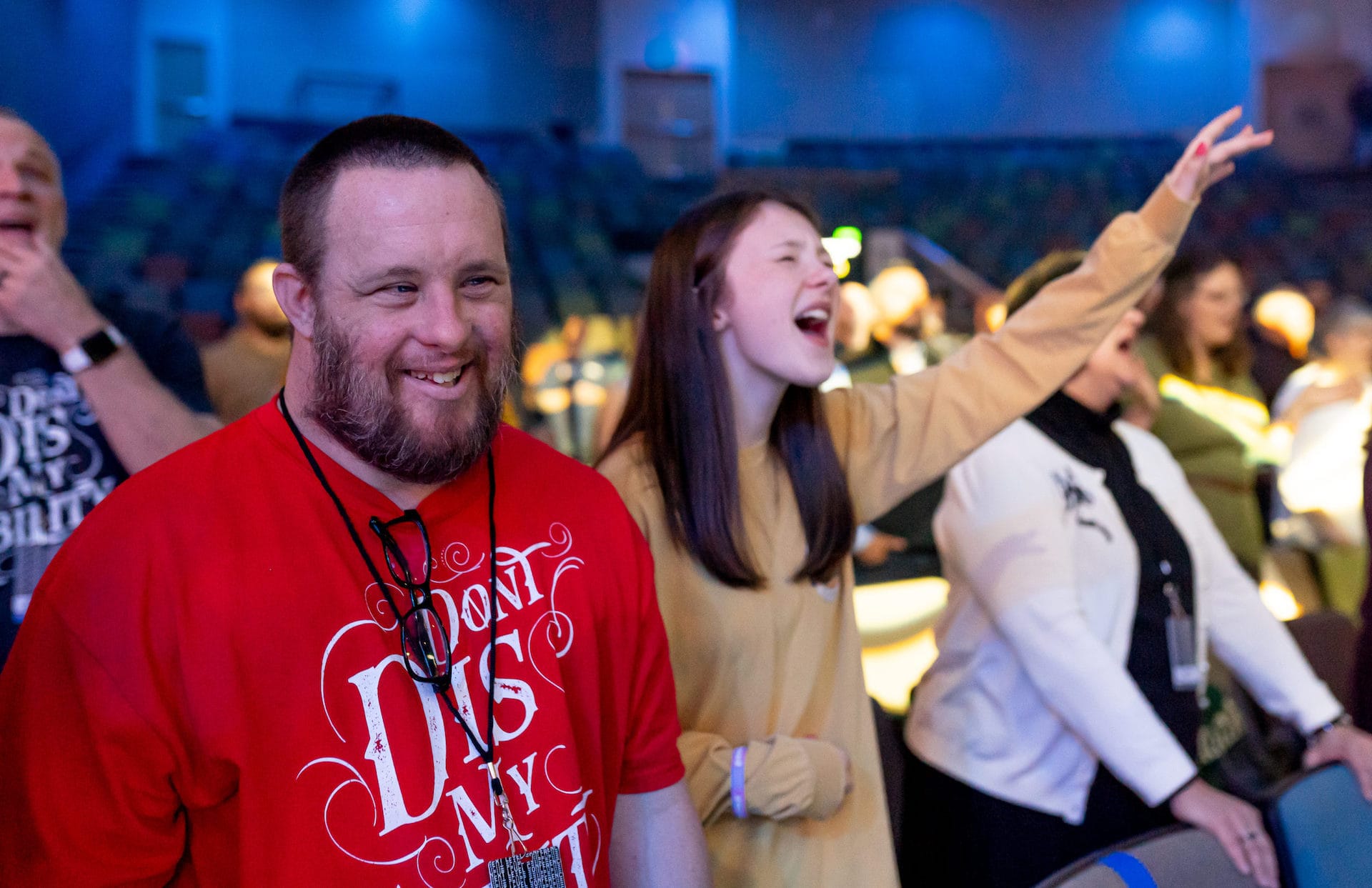

One of the biggest buzz words in the disability community over the past several years has been inclusion. Schools are leading the way with the initiative of getting children with disabilities back in main stream classrooms. But what does it look like in the church?

Exclusion means that people affected by disability are not included at any level of the church. I could argue that the dots just outside the circle should be outside the church walls. This represents most of churches in America, 90% to be exact. Excluding people affected by disability typically is not an intentional act. However, having no form of disability ministry outreach, lack of awareness, and accessibility issues routinely keep people excluded from the faith community.
Segregation of people affected by disability can easily happen within the walls of a church. This happens when people affected by disability are intentionally clustered in areas of the church apart from the rest of the congregation. You may see this in a church where the only option they are given is to go to a Sunday school class for people with disabilities. Or you may see this in the Children’s Ministry where the only option is a designated classroom set apart from other children. All churches using these methods are doing them with good intentions, but without other options for inclusion they fall short of the 1 Corinthians 12 ideal.
Integration and true inclusion are often mistaken for each other. For those fighting for inclusion the end goal is often just getting them in the same room together. While this is a noble fight it falls short of the goal. You can see this model sometimes in churches where a section of seats in a worship center are reserved for people affected by disability. The location of these seats, typically in the back corner, is irrelevant. The idea is that they have been corralled and separated from the rest of the congregation. This not only objectifies people affected by disability, but it also severely limits interaction.
In the inclusion graphic you can see that there is no separation. Everyone is fully integrated together. ALL people are accepted and have an equal opportunity to interact with each other. Inclusion is not accidental. Purposeful awareness and training have happened in your congregation. People affected by disability in this model will have equal opportunities to use their unique giftedness in the Body of Christ. 1 Corinthians 12:22 teaches us that people affected by disability are indespensiABLE to the church. Exclusion, Segregation, and Integration fall short of the 1 Corinthians 12 ideal for all people.
After studying this graphic a bit closer evaluate your church. How would you classify your church? If you wouldn’t say that you have made it to full inclusion what steps could you take? Not sure? Ability Ministry would be glad to help you take a next step!


